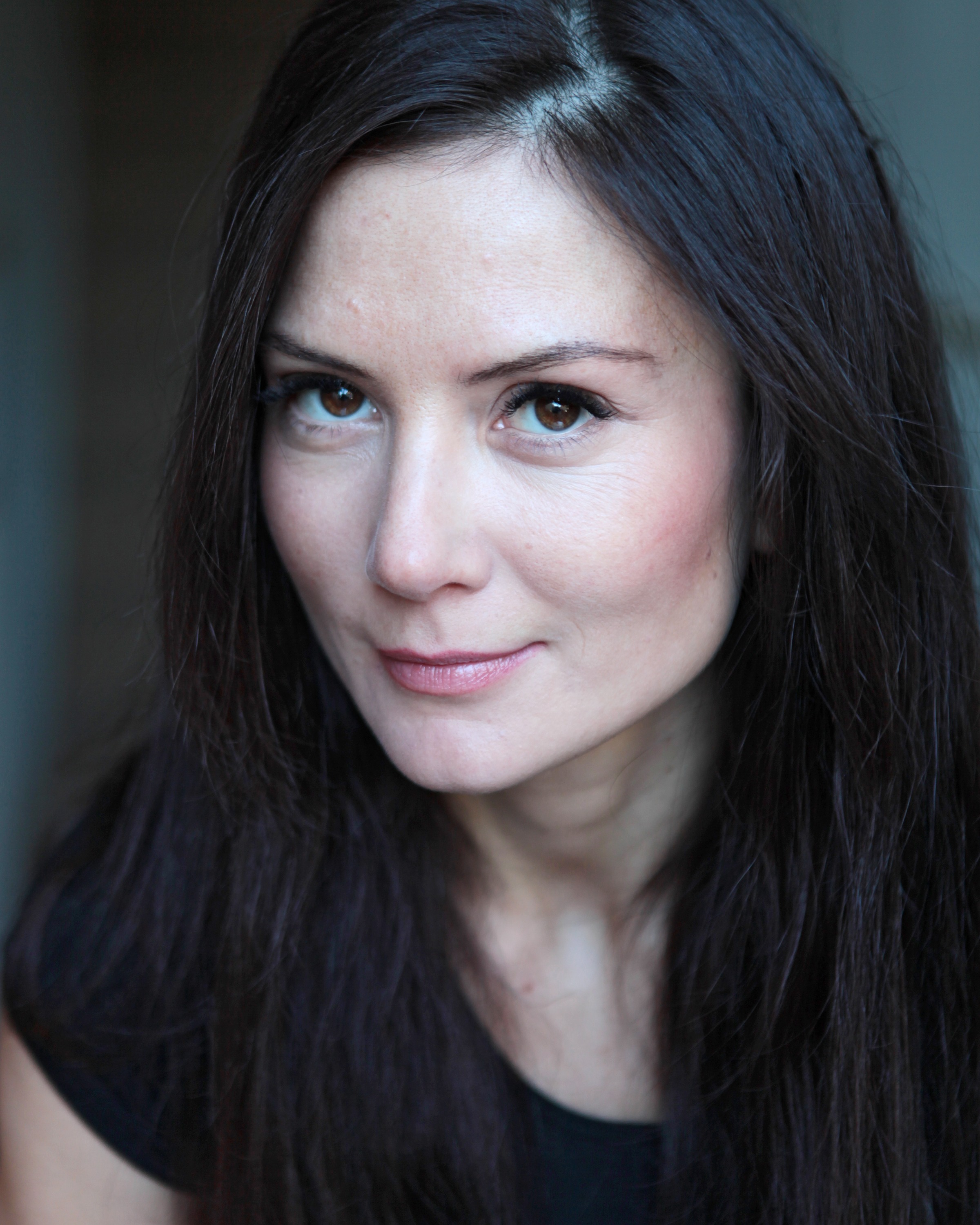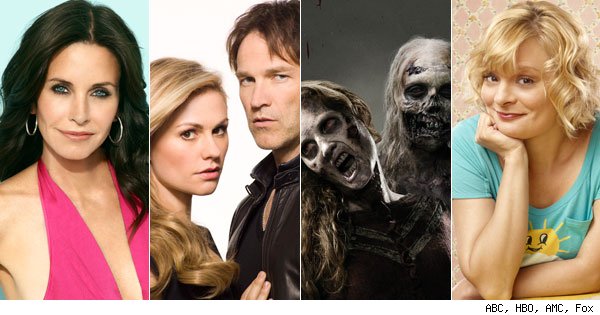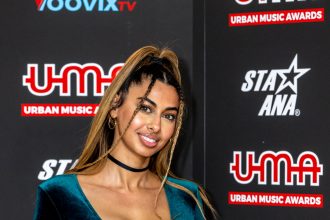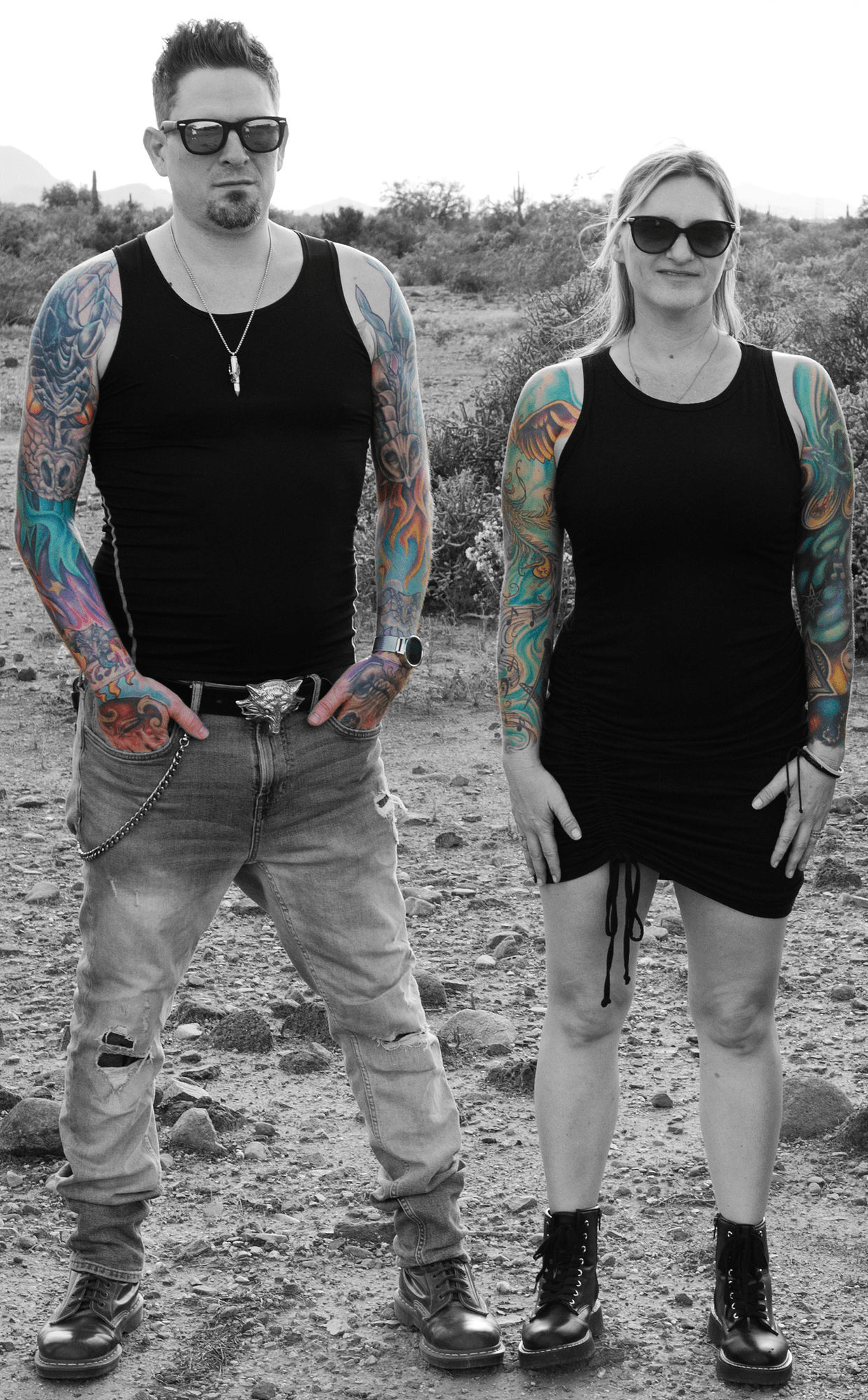1. Acceptable Damage incorporates multiple socially relevant themes, the plot taking place at the crossroads between cultural, geographical, social, existential, and psychological frameworks. It revolves around teenage angst, mental illness and the stigma surrounding it, violence, injustice, and unhealthy ways of coping with disillusionment in life, identity issues, as well as the importance of family bonds and of human connection and empathy. Which aspect of the story attracted you to it the most and why? What made Fiona Whitelaw’s script stand out to you?
The possibility of seeing the world through someone else’s eyes, along with their struggles to be understood. I’ve started my research in a completely nonpolitical attachment to social or psychological frames. My only desire was to discover and to reveal how everyday life feels for Katy, in a very deep sensorial approach.
2. This is the second feature film you have directed. Your debut film, Memento Amare, both written and directed by you, delves into the life of a Romanian immigrant, exploring feelings of alienation and homesickness, as well as a sense of loss, all reinforcing the power of human connection and familial bonds. In Acceptable Damage, there is also a pervasive sense of despondency. The problematic behaviour of the main antagonist, Rabbit, stems from a state of disconnection and a type of homesickness- a longing for a home he never had, one filled with love. In a sense, would you say that here lies a common element between the two films: the universal theme of alienation and disconnection, interpreted within entirely different contexts and cultures? Is this an emotion you find important and feel compelled to explore through art?
It’s an emotion that I can understand, being “on the road” since I was 10 years old. I guess I’m always trying to uncover our collective fluid identity as human beings in search of connection and love in all my films, rather than focusing on a fixed identity that a country or profession can give you. Because you see, I’m looking for a language in film that we can all understand and relate to, and for me, that has nothing to do with words. In cinema, if you take the words away you’ll bring people together through the poetry of an image. And that is something we can all understand.
3. Was it a challenge to work with someone else’s script, since you normally write your own stories and tend to start everything from scratch? How does your creative process differ when you have more artistic liberty as opposed to when you have to adapt to someone else’s vision, to visualise and depict a world conceived by someone else; do you prefer having more artistic freedom?
There’s no creative process without artistic freedom. There could be commissioned jobs, but not a creative process. I believe to be in the flow of a truly creative process your freedom has to be completely unhinged from outside expectations and pressure. It’s always ideal to start from a script that you’ve written or you’ve been part of from the beginning. However, when I decide to embody someone else’s ideas, I try to go as deep as possible in my research and try to understand what compelled or was vitally important for the writer when they’ve approached the story in the first place. This gives me a sense of belonging into a process that I’ve come in later on, and helps me empathise and protect the characters during the entire process of making the film.

4. Were you able to relate to or empathise with the characters in Acceptable Damage, in order to help bring them to life on screen and to fulfil your creative vision?
As a director, I must empathise with each character and protect them from falling into the good|bad guy type. I don’t believe such people exist, hence I’m not interested in watching them on screen.
5. Was there a concern with the representation of mental disorder and its struggles?
I never set out to make a film about that, so I didn’t worry about misrepresentation. My film was intended to depict visually a life viewed from someone else’s eyes that the majority of characters in the film are considering as an outsider. If the audience feels compelled or not to empathise with her throughout her journey it’s completely their choice. On a personal note, I hope they do.
6. The way in which the characters are shown on screen creates a visual contrast between Katy and the rest of the world, which underlines conflicting world views, approaches to life, and ways of coping with their problems as well. As opposed to the mostly dark, cold, gritty aesthetic of the London suburbs and the (literal and psychological) shadows in which the gang lurks whilst committing acts of vandalism and harassment, Katy appears in some beautiful, artistic, almost otherworldly shots surrounded by light, giggling, playful, enjoying simple pleasures. These shots are in harmony with her purity, innocence, and choice to remain happy and emanate positivity even when surrounded by a corrupt world, filled with violence. Was this a deliberate intention? Would you like to elaborate on this and other creative choices you made in the process of conveying this story and fleshing out the characters?
For me, Katy appeared from the beginning as a ray of light in the middle of a hopeless world. The interesting thing was that the more she was dealing with rejection and misunderstanding, the more resilient and hopeful she would become so cinematically, I’ve imagined her always surrounded by a warm aura of light. My brilliant DOP Simon Rowling, which I’ve worked with for my last 3 films came up with a very good choice of lighting and lenses and we’ve tested different options until we were both happy with it. Also, we were open to improvising (the fountain scene) if we’ve felt that the actions or the surroundings would enhance some of the characters’ traits even more.
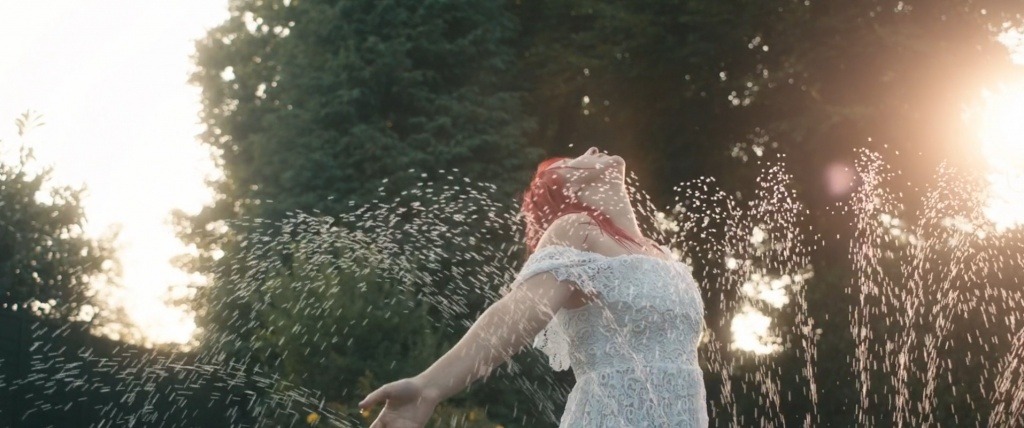
7. The fact that the protagonist remains kind, hopeful, and ambitious rather than wallowing in self-pity or perpetuating the vicious circle of abuse conveys a great message to the audience. Her perspective is facilitated by her close, loving relationship with her mother, but is also possible through her self-empowerment, resilience, and choice to escape the victim/perpetrator dichotomy. Her character reminds people that, no matter the circumstances, everyone can choose to be guided by love rather than reacting through hate and insecurity. The final scene illustrates this clearly. Katy recognises Rabbit’s pain and acts from a place of love and empathy, which seems to touch him emotionally as well. Is the film ultimately about how the dichotomy between good and bad exists within each person, and everyone has a choice to harness and act on one of the two parts; as well as how the presence of love and empathy can be very impactful in one’s life and in shaping one’s identity?
Your question comes really well at this point, as I’ve already touched upon not buying into the good|bad guy type and on the fact that Katy represents hope in a world who have lost the meaning of living. During preproduction, I’ve tried to explain and defend each character’s back story in a way that in the end you cannot fully blame anyone for what is happening in the end. The youth is mostly coming from a broken home and they feel lost, Rabbit’s father is recovering from alcoholism, after he lost his wife, Rabbit is missing the love of his mother and pushes on Katy’s exact connection with her own mother, the police inspector is trying to keep everyone together with the small amount of damage while the young policeman is trying to show his enthusiasm and goes overboard by taking measures into his own hands. It’s a system which perpetuates itself and comes up faulty but at the core, it basically lacks the simple human basic qualities: connection and empathy, which we can also simply call love.
8. Let’s delve into your personal history, because you have an impressive, inspiring background. What made you switch from Classical music to filmmaking? Does music still play a role in your life or have a special place in your heart?
You know, there should be an expression into the common parlance to say “once a classical musician..”. I don’t think classical music can leave one’s system after you’ve been part of it for more than 20 years. I think music has shaped me differently from the age of 4, it broke me if you wish, from being good at any other practical professions. I’m very grateful to be practising the thing I love the most, as I don’t know if I would be good at anything else. Music has a special vibration I think which encourages you to dream higher, to bigger journeys and stories. From there to film was a very small step.
9. What do you do or where do you go when you need to feel inspired?
Travelling and detaching from everything familiar is a big trigger for me. Solitude too. It helps me detach from anything I know about myself and about life in general and look at the bigger picture, get back to what’s really important. I also love being with my few special ones, the ocean and wine. The little things.
10. How do you feel that the facets of your identity- as a Romanian, as a woman, and as a creative person in the film industry- intertwine when you breathe life into a story?
Although I identify myself as a woman, I’m well aware of my masculine and feminine qualities with which I work with in different aspects of my life. The role of an artist or director used to be seen as one of power which was usually associated with masculinity. To me the quality of power – understood here as creative leadership,- is more associated with femininity because it doesn’t demand force but wisdom, calm and courage to protect (the vision and your crew). As a national, I have even less to say in terms of identity. Even though I’m proud of my old South-eastern cultural and historical heritage, and having lived and mingled into the sophisticated and beautiful Western world, I identify locally with the place I live in, which changes every few years.
11. Is your creativity ever limited by financial barriers, and have you ever had to make compromises that you regretted?
Fluidity is a big word in this industry. There’s always a tug of war inside us between choosing to work under compromises or waiting for the ideal conditions. I try to stay urgent in my artistic work and touch as many hearts as I can in my limited time on earth. I think we’re all trying to do the same through different means of expressions. It’s our basic need to leave something behind. When you look at it like this, compromises transform into concessions, and the creative obstacles end up leading the mind to more beautiful creative paths and in the process they’re enriching your art.
12. What are some concepts you would like to explore in the future and what projects are you in the process of crystallising?
Mortality, legacy, urgency of being and love. All superimposed on a classical music soundtrack.


